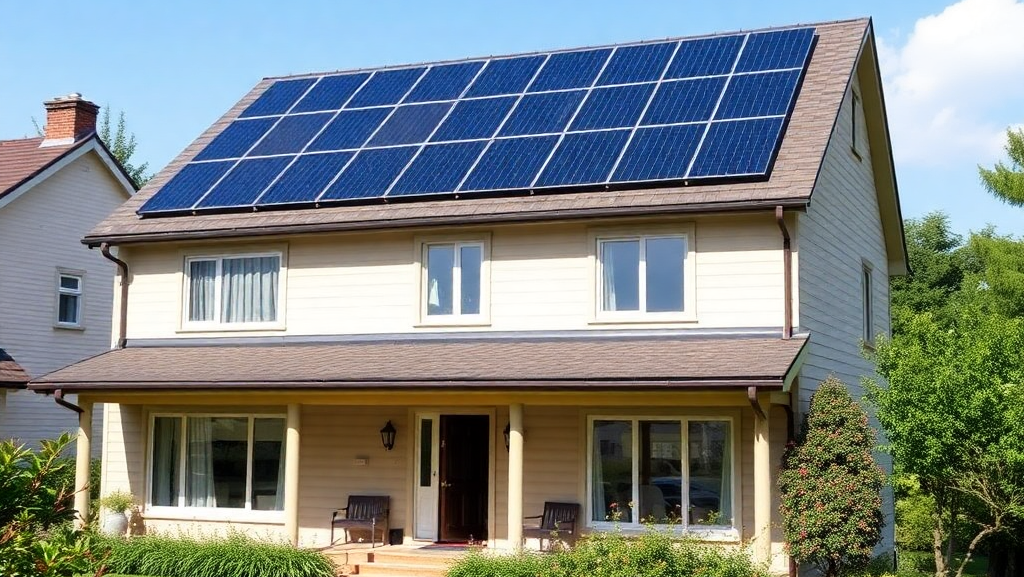Key Considerations for Using Solar Panel Power Generation Monitoring Systems
Accurate Sensor Installation and Data Collection
Proper Sensor Placement for Real-Time Monitoring
To ensure precise measurement of solar panel output, voltage and current sensors must be installed directly on the DC output terminals of each panel or panel string. For systems with multiple panels, sensors should be placed at the junction box or combiner box to capture aggregated data without signal loss. Incorrect placement—such as installing sensors on the AC side of an inverter—can lead to inaccurate efficiency calculations due to conversion losses.
Calibration and Environmental Compensation
Sensors require regular calibration to maintain accuracy, especially in extreme temperatures. For example, irradiance sensors (used to measure sunlight intensity) must be calibrated against reference cells to account for spectral mismatch. Temperature sensors should be positioned near the panel backsheet to monitor cell temperature, as high temperatures reduce output efficiency by 0.5% per degree Celsius above 25°C.
Multi-Parameter Integration for Holistic Analysis
Advanced systems integrate voltage, current, temperature, and irradiance data to calculate real-time efficiency. For instance, a system monitoring a 300W panel might detect a 20% drop in output under partial shading. By cross-referencing irradiance data, it can distinguish between shading-induced losses and potential panel degradation, enabling targeted maintenance.
Data Transmission and Remote Accessibility
Reliable Communication Protocols for Off-Grid Systems
In remote areas without cellular coverage, LoRaWAN or satellite communication modules ensure data transmission to central servers. For example, a forest monitoring system might use LoRaWAN to send panel performance data every 15 minutes, with a battery backup to sustain operations during prolonged cloudy periods.
Cybersecurity Measures for Cloud-Based Platforms
Cloud-connected systems must implement end-to-end encryption (e.g., AES-256) and role-based access control to prevent unauthorized data access. A study found that 15% of solar monitoring systems lack basic authentication, exposing them to data tampering risks. Regular firmware updates and intrusion detection systems (IDS) further mitigate cyber threats.
Edge Computing for Local Data Processing
Edge devices with onboard analytics reduce latency and bandwidth usage. For instance, a solar farm might use edge gateways to process real-time data from 1,000+ panels, triggering alerts for underperforming units within seconds rather than relying on cloud-based analysis, which could delay responses by minutes.
Fault Detection and Maintenance Optimization
Automated Alerts for Anomalies
Monitoring systems should generate alerts for deviations beyond predefined thresholds. For example, a sudden drop in voltage from 36V to 30V might indicate a faulty bypass diode, while a sustained current mismatch could signal a cracked panel. Alerts should be sent via email, SMS, or integrated with maintenance management software (CMMS) for workflow automation.
Predictive Maintenance Using Historical Trends
By analyzing historical data, systems can predict component failures before they occur. For instance, a gradual decline in output efficiency over six months might indicate panel soiling or microcracks. A case study showed that predictive maintenance reduced downtime by 40% in a 5MW solar plant by scheduling cleanings based on soiling accumulation models rather than fixed intervals.
Integration with Cleaning and Inspection Schedules
Monitoring data should inform maintenance schedules. For example, if a panel’s output drops by 10% after a dust storm, the system can trigger an automated cleaning request. Similarly, thermal imaging data from infrared sensors can identify hotspots caused by poor electrical connections, prompting immediate inspection.
Environmental Adaptability and Scalability
Weather-Resistant Hardware for Outdoor Use
Monitoring devices must withstand harsh conditions. For example, IP67-rated enclosures protect against dust and water ingress, while UV-resistant coatings prevent degradation of plastic components. In coastal regions, corrosion-resistant materials (e.g., stainless steel or anodized aluminum) extend equipment lifespan.
Scalability for Growing Solar Installations
Systems should support modular expansion as solar capacity increases. A microgrid project might start with 100 panels and later add 500 more. The monitoring solution should accommodate additional sensors and data streams without requiring a complete overhaul, using protocols like Modbus TCP or MQTT for seamless integration.
Multi-Language and Multi-Unit Support for Global Deployment
For international projects, monitoring platforms should offer language localization and unit conversion (e.g., from watts to kilowatt-hours). A solar farm in Germany might display data in German with metrics in kilowatt-peak (kWp), while a U.S. project uses English with alternating current (AC) output in kilowatts (kW).
By addressing these areas—from sensor accuracy to predictive maintenance—solar panel monitoring systems can maximize energy yield, reduce operational costs, and extend equipment lifespan.


